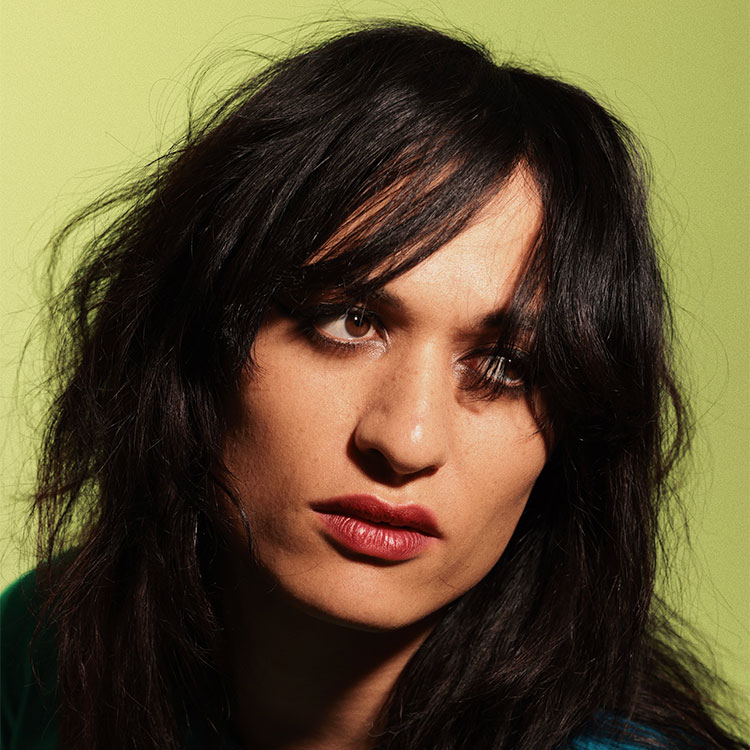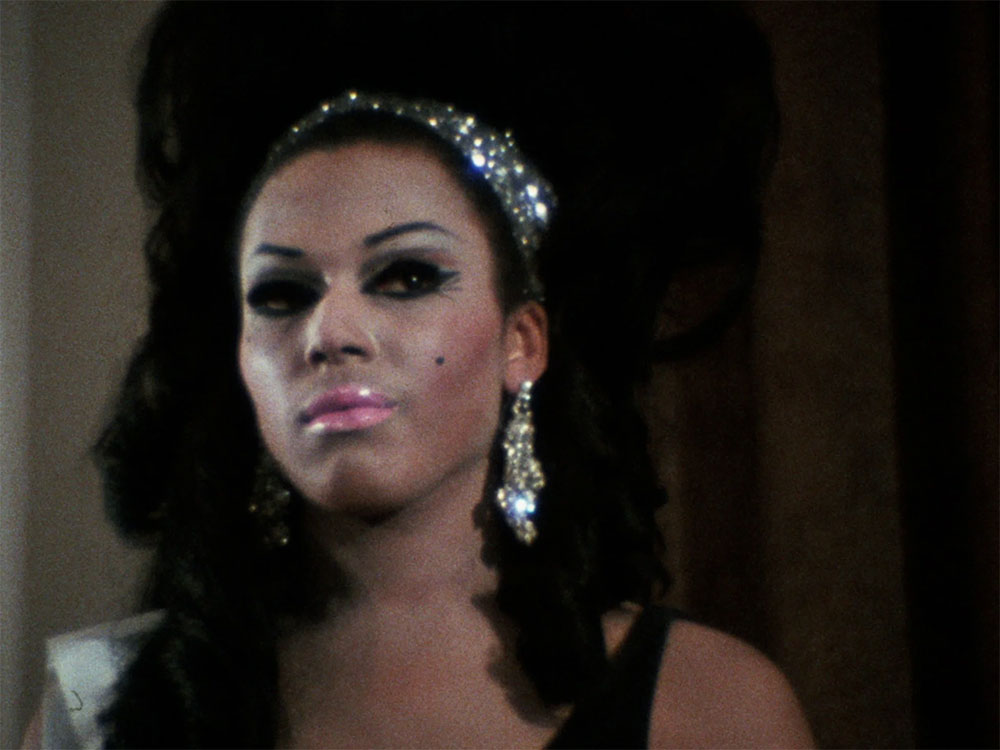
The seeds of ballroom were planted as early as the Antebellum South, where cake walks (also known as “prize walks”) were performed by enslaved people on plantations. The mimicry of their master’s dances was done with such grace that their pantomimes (often judged by the masters) were rewarded with an elaborately decorated cake.
Ball culture began to bloom during the Harlem Renaissance, most notably at the Hamilton Lodge Ball, an annual LGBTQ event where the artistry of drag was often reported on with admiration or outrage. Its popularity resulted in the new District Attorney of New York City calling for its closure in 1937. Ball culture persisted and grew beyond Manhattan through drag pageantry, which was fraught with racial bias, leaving Black and Latinx queens marginalised.
Crystal LaBeija, a black American trans woman and drag queen, famously called out prize fixing at the Miss All-America Camp beauty pageant in 1967 after a white queen, Harlow, won the title. In her read, as documented in documentary The Queen, she moves from dragging Harlow’s ‘bodiless’ presentation and artistry – “Look at her makeup, it’s terrible!” – to defending her – “Don’t bother her, it’s not her fault.” It demonstrated the deep hurt and frustration over racism and her innate maternal nature, which culminated in the founding of House of LaBeija and set the structure of ballroom as we know it today.
IIt should come as no surprise that the genesis of ballroom in Aotearoa took place in South Auckland, where FAFSWAG hosted the first vogue ball in Ōtara in 2013. Since then the ballroom scene has burgeoned across the country.
“There are quite defined family aesthetics in Ballroom,” says Shane Cyrus, a professional makeup artist and a proud member of House of IMAN. “The House of Dawn is so artistic, you can spot a Dawn from a mile away. They’ve got this sirenesque beauty and are very experimental, while the House of Coven girls are more dark and vampy. We IMANs like to reference 90s supermodels, we're always wearing a house colour or something that ties us all together as family.”
Shane joined the House of IMAN after working on a photoshoot for their ASB Arena show in 2021. “We all clicked straight away. For a lot of the girls, it was their first time getting their makeup done professionally. I didn’t give anyone a chance to say no – I said, ‘You need a makeup artist in the house who knows how to do makeup for the boys, the girls and everyone in between.’ It allowed me to express myself like I never had before.”
At the age of 14, Tony Su’a was watching YouTube makeup tutorials in his bedroom. “I couldn’t wait to move out so I could try makeup on myself. Once I did, I ordered $40 worth of makeup products from AliExpress. I’d wait for my partner to leave for university in the morning and then shower, shave and play with makeup. I used to hide it all away before he got home.
“Eventually, I wanted to put on makeup and go clubbing, which turned into wearing makeup and heels to go clubbing until I thought, ‘Oh, why don’t I do drag?’” Fast forward to 2024, Nikita Iman won global recognition following her season on RuPaul’s Drag Race Down Under.
At the age of 14, Tristan was building their makeup arsenal in secret. “I’d do my makeup, go to school and take it off before I got picked up. The makeup was undetectable because no one could know, so I just filled in my eyebrows and added a little bit of mascara. It progressed as I got into high school. I couldn’t hide much of it anymore.”
A few years later Ego Dawn started her own house, Avant House of Dawn, with Venus Blacklaws, whom she met at Elam School of Fine Arts. “Venus and I started drag at 19, and the makeup collection was bigger than my high school bag.”
We asked Nikita, Shane and Ego about their beauty journeys against the landscape of ballroom culture – and the face category – and how they’ve used makeup as a tool for self-realisation.
NIKITA IMAN, drag queen, House of IMAN
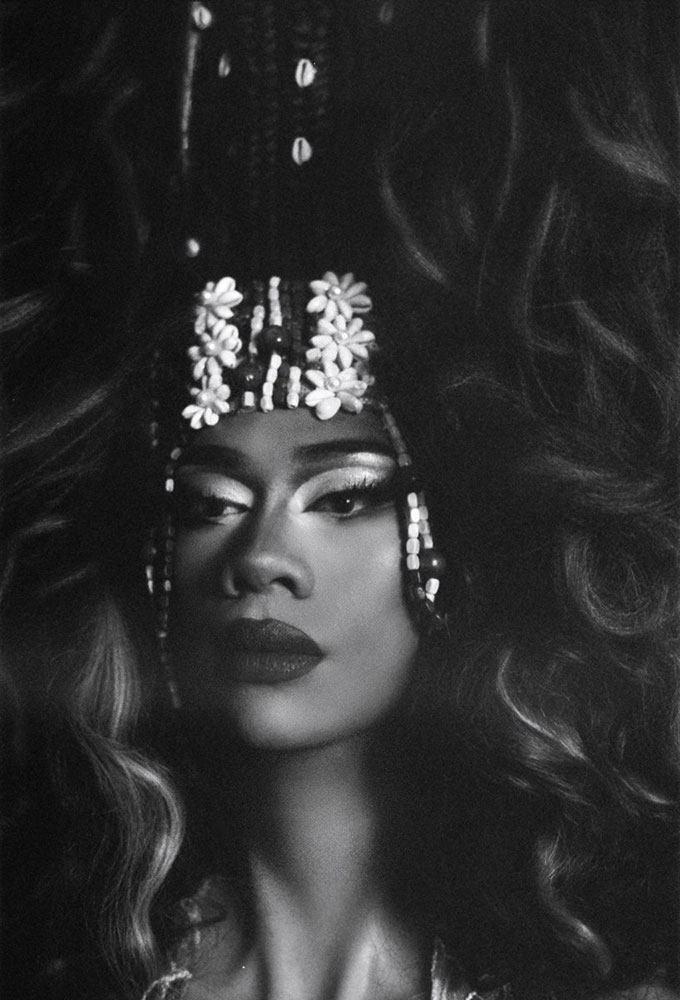
Who are your beauty icons?
Most of my beauty icons are from the ballroom scene, the trans pioneers in America, and my girls from back home who gave me tips while we got ready together. My aesthetic is feminine essence, so I look to trans POC girls for my concepts, my outfits, my look, head-to-toe.
What role do beauty and makeup play in ballroom culture?
For a lot of the girls, makeup and beauty are their armour to go out into the real world. We look forward to our ball because we get the chance to get dolled up and showcase how we see ourselves compared to what we put forward every day. It allows us to feel special, included and loved in a space where we are seen, as opposed to when we leave the doors of the ballroom. People stare at us as if we're different, and we're freaks.
Can you share your thoughts on the relationship between drag and ballroom beauty? How are they different or similar?
From what I’ve seen, drag is predominantly white, while the ballroom scene is predominantly POC. We pull from different references – drag is very cabaret, comedy and Broadway, whereas ballroom pulls inspiration from everyday realness, trans girls, iconic movies and more POC heavy stuff.
A lot of my outfits on Drag Race were heavily inspired by brown pop culture, and fans found it refreshing to see someone with a different perspective on drag come through. Drag now is softer glam, a lot more feminine. When I started, the older girls would put their face makeup on in 30 min, go in with lots of glitter, lots of blush, really intense. I remember seeing that and thinking, ‘wow, that's really scary!’.
Walking face has guided my makeup style to be more passable. I mean, as passable as a 7-foot drag queen can be. When I keep my makeup passable, it makes my energy and demeanour more feminine, more pussy, more cunt as we’d say.

How have you seen the face category evolve?
The face category is based on survival. Once the girls and the community aren’t fighting for survival, I think we could see a shift in the face category. Face has always been about being passable within society and great features, that has always stayed the same.
What makeup/beauty products do you swear by, and what is a beauty tip or technique that changed your makeup game?
Juvia’s Place is an African brand, and their shades for contouring go quite deep. I find a lot of setting powders or pressed powders a little too red or too ashy on POC skin, so I love this brand because their products are complementary to brown and dark skin.
I block my brows, so I love a good glue stick and a bit of Got2B Glued. You spray it onto a surface and dab it over your brows so it conceals them, and then put your powder over it to cover it up. I do three to four layers to set the glue and finish with a bit of Got2B spray and set with powder. We’ll get out looking like Voldemort!
What is your beauty advice for someone starting their journey in the ballroom community?
Really take your time and learn your face. The drag scene is not going anywhere, and there's always going to be a ball. Makeup doesn’t have to be expensive; I can still go to the Chemist Warehouse or a drug store and make it work.
I wasn't the most popular person when I was young. I think sitting down in the mirror and looking at my face, working out what I could do with myself, got me to a point where I felt really confident in makeup, and that gave me confidence out of makeup (as a boy) as well. God, it's been such a journey.
Sometimes I forget that so many kids are too scared to start. That was me when I was younger – I was embarrassed and ashamed of wanting to be something I was taught wasn’t right. As soon as I started, I loved it, and it took those fears out of me.
EGO DAWN, Mother, Avant House of Dawn
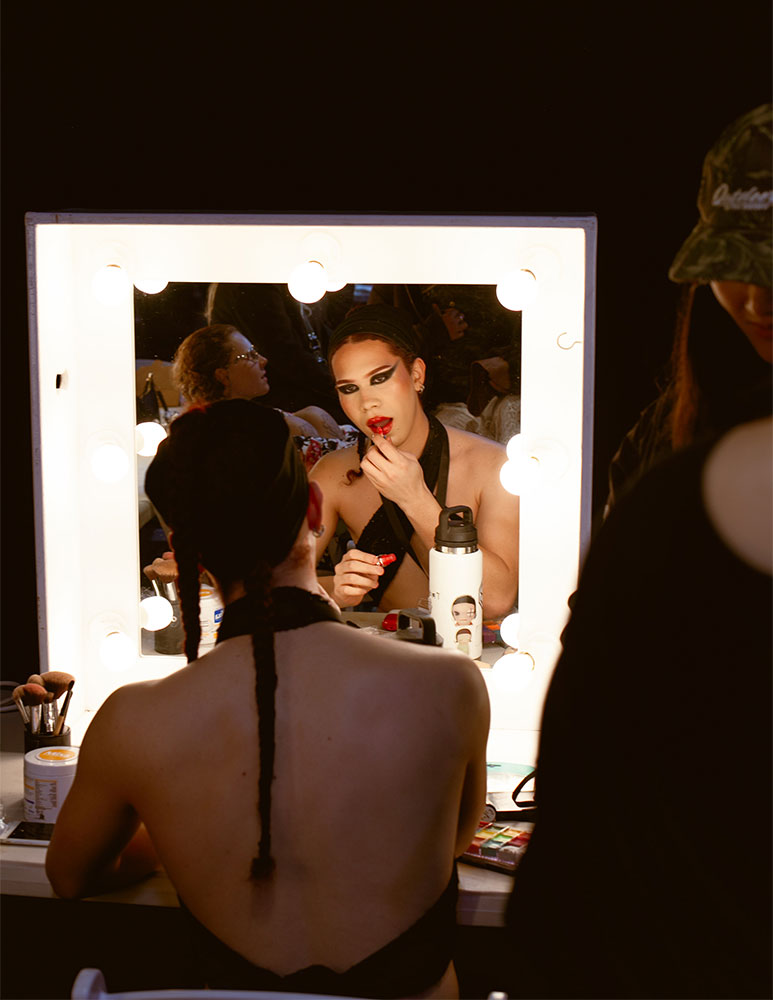
What is your earliest beauty/makeup memory?
The trio of female figures I grew up with were my grandmother, mother and aunty. They used to do each other’s hair while playing their favourite music and jamming in the bathroom.
I loved dolls as a kid; my granddad used to buy them for me, and my mum would take them away. When I wasn’t allowed dolls anymore, I had to get creative. I start making dolls out of washing line pegs, and I would get some gift bag rope, tie a knot and brush out the fibres to make a little wig.
What role do beauty and makeup play in ballroom culture?
It’s such an integral part. Speaking from personal experience, the beautification of it all and the makeup of it all helps you activate what energy you’re going to bring to the floor. It’s just as important as everything else because everything works together, it’s almost like you’re being fully realised from head-to-toe.
Do you have a signature makeup look that makes you feel like your best self at the ball? Or does it change across categories?
I will always, without fail, pick up a black shadow. I just love a bold graphic eye, whether it's blurred out or a really crisp shape. That’s definitely my go-to because it feels dark but glam, a bit like, ‘ooh, who’s that?’ I feel like it gives me a certain fierceness and makes my eyes pop.
What makeup/beauty products do you swear by, and what is a beauty tip or technique that changed your makeup game?
Lip balm is my favourite product. I barely use lipstick anymore, but I use Blistex. I love to tint it with my favourite lipstick, that’s been my trick for many years. Even on the days that I don't feel my best, if I have my tinted blistex on, that's all I need! It’s juicy!
Right now, I’m back to using my Ben Nye Neutral Set, which is a tried and true product. I never really have setting spray, so even some rose water in a spray bottle does the trick. The Kevyn Aucoin Sensual Skin Enhancer is really concentrated and full coverage. You can use a tiny bit of it and get a really brightening effect, you can spot conceal or even use it as a foundation very lightly and buff it out. It makes your skin look amazing!
I think what’s changed the most for me is the way I contour my nose. My nose is wide, she’s thicc, my focus isn’t making it look small. For me, it’s just as if I went out in the sun and got a little bit of a sunburn – a little bit bronzey just on the nose bridge, and that’s it.
I also like to extend my blush from the top lip toward the cupid’s bow, so when I put my tinted lip balm on, it looks really pushed up. I also use a deeper tone of the base colour on the arches of my brows, so it feels multidimensional.
How have you seen the face category evolve?
Face is a category that heavily embodies the origins, the essence of the femme queens back in the day. I think that’s why face is what it is. You can emulate icons and legends from the past, but ultimately, it comes down to radiating your own energy and essence and giving that to the judges.
What is your beauty advice for someone starting their journey in the ballroom community?
Work with the vessel that you have, not against it. You are the special thing, you know? The moment that you learn to enhance that, you’ll be the person that you’ve always seen in your mind.
As you grow into yourself, you’re like Pokémon! It’s Pokémon evolution – it’s still you, but you know your magic. Don’t be afraid to experiment. If you feel like you wanna do a crazy beat or something out the gate for yourself, explore that (while still being respectful – no appropriation). It might be different to what you thought you would like, and you’ll start to develop your beauty practices.
SHANE CYRUS, makeup artist, House of IMAN
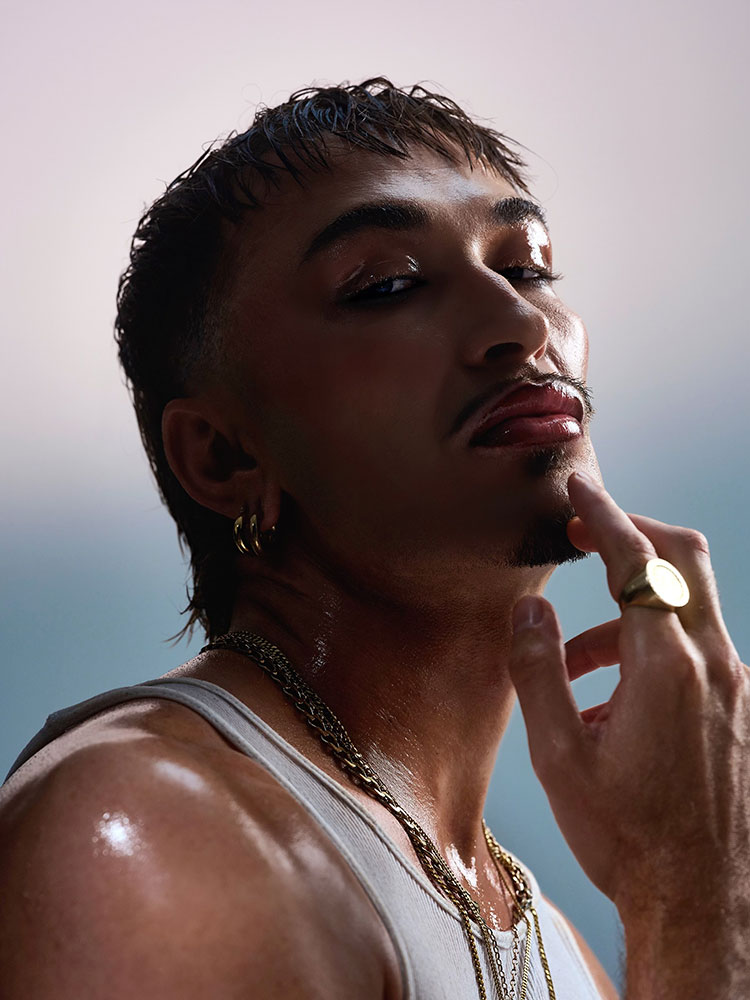
What is your earliest beauty/makeup memory?
When I was young, my mum used to work at makeup counters for brands like Elizabeth Arden and Estée Lauder. Her signature look was based on her hair colour at the time. When she had a box dye purple, her makeup look was a monochromatic purple. She would use her lipliner through her brows.
Not everyone’s mom had a look that was so striking; it was really inspiring for a young gay boy to see.
Tell me about your makeup journey and how it's developed over the years.
I like to look clean, pretty, but still masculine. I used to wear my mum’s Thin Lizzy kit to school to cover my breakouts. I feel the most confident when I have perfect skin – I like it to be contoured, smooth and as ‘natural’ looking as possible, even with a lot of makeup on.
I like defined features and seamless blending so it looks like I have the face of a supermodel. Face is the category I resonate with the most because I’m serving face 24/7!
What role do beauty and makeup play in ballroom culture?
It’s everything. It sells the story and the fantasy that the categories call for, it can make or break a look.
It is also very important because it can be gender affirming. Sometimes it’s about feminising the faces or making the face look more masc, structured and modelesque. You can make it undetectable so it’s not, as we would say, ‘clockable’.
I’m heavily inspired by the ballroom girls, the sheer artistry of their looks is better than a lot of working makeup artists who get paid to be on shoots.
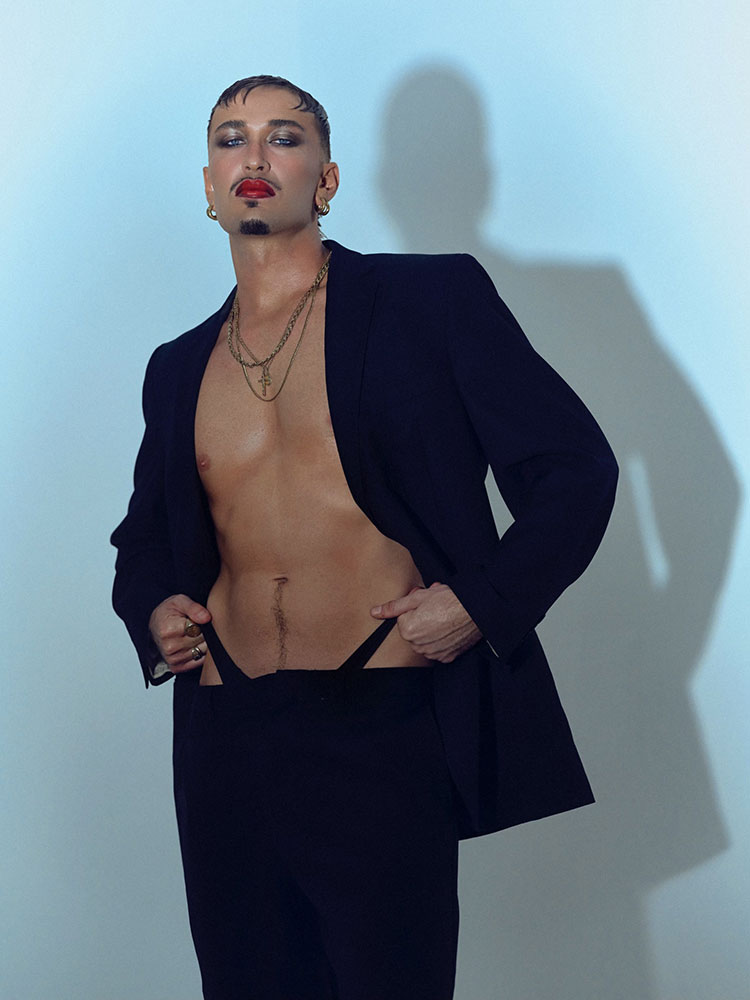
Do you have shared beauty rituals before a ball, like doing each other's makeup or getting ready together?
We will train for a ball like it's the Olympics, but everything creative happens on the fly. It’s taught me to be quicker. It’s like being backstage at a fashion show when you’re short on time and do the boldest feature first.
We all help each other. I’ll be painting someone and glueing someone else’s lash on at the same time, while I’ve got my face tape clinging on and I still don’t know what I’m wearing.
Jaycee gets everyone else ready while she’s got no makeup on and is not dressed. That’s a testament to her and how much she cares about people- personally, I could never. I’m not going out there without my makeup on!
What is your beauty advice for someone starting their journey in the ballroom community?
Trust your elders.


